- Choosing the Right Flowers
- 1. Consider the Climate
- 2. Determine Sunlight Requirements
- 3. Select Fall-Blooming Varieties
- 4. Consider Height and Spread
- 5. Evaluate Soil Conditions
- 6. Read Planting Instructions
- Preparing the Soil
- 1. Clear the area:
- 2. Test the soil:
- 3. Add organic matter:
- 4. Remove existing plants:
- 5. Break up the soil:
- 6. Consider adding fertilizers:
- 7. Mulch the soil:
- Planting Techniques for Autumn
- 1. Choose the Right Plants
- 2. Prepare the Soil
- 3. Plan the Layout
- 4. Dig the Holes
- 5. Plant Carefully
- 6. Mulch and Water
- 7. Maintain and Monitor
- Watering and Fertilization
- 1. Watering:
- 2. Fertilization:
- 3. Mulching:
- 4. Monitor and Adjust:
- 5. Consider Drought-Tolerant Varieties:
- Protecting Your Plants from Frost
- Choose Frost-Tolerant Plants
- Cover Your Plants
- Water Your Plants
- Use Mulch
- Bring Plants Indoors
- Monitor the Weather
- Pruning and Deadheading
- 1. Pruning
- 2. Deadheading
- Adding Mulch for Insulation
- 1. Choose the Right Mulch
- 2. Apply a Thick Layer
- 3. Mulch Around the Base
- 4. Reapply Mulch Regularly
- 5. Consider Using Compost
- 6. Remove Old Mulch in Spring
- Maintaining a Beautiful Fall Garden
- Watering
- Weeding
- Deadheading
- Fertilizing
- Protecting from Frost
- Monitoring for Pests
- Cleaning up
- Enjoying the Harvest
- Questions and Answers:
- What are some tips for planting flowers in the autumn?
- Which types of flowers are suitable for autumn planting?
- What should I do to prepare the soil for planting flowers in autumn?
- How often should I water my flowers in the autumn?
- What is the purpose of mulching when planting flowers in the autumn?
- Can I plant bulbs in the autumn?
- Are there any specific maintenance tasks I should do for my fall garden?
- Videos: 6 Must-Grow Crops to Sow this Autumn
Autumn is a perfect time to plant flowers and enhance the beauty of your garden. With the cooler temperatures and moist soil, it provides an ideal environment for plants to establish their roots and thrive. Whether you want to add vibrant colors to your garden or create a cozy, welcoming atmosphere, here are some tips to help you plant flowers in autumn and achieve a stunning fall garden.
1. Choose the Right Flowers: When selecting flowers for your autumn garden, opt for varieties that are known for their ability to withstand cooler temperatures and shorter daylight hours. Some popular options include mums, pansies, asters, and ornamental kale. These flowers are not only resilient but also offer a wide range of beautiful hues to brighten up your garden.
2. Prepare the Soil: Before planting flowers, it’s crucial to prepare the soil to ensure optimal growing conditions. Remove any weeds, rocks, or debris, and loosen the soil to allow for better drainage. Adding compost or organic matter can also provide essential nutrients for the plants and improve soil fertility.
3. Plant in Well-Draining Containers: If you don’t have a garden bed or limited space, consider planting flowers in well-draining containers. This allows you to move the pots around and protect the flowers from extreme weather conditions. Ensure the containers have drainage holes to prevent waterlogging, and use a high-quality potting mix to provide the necessary nutrients and moisture retention.
4. Water Regularly: While the autumn weather may bring more rain, it’s still important to water your flowers regularly. Monitor the moisture levels in both the soil and containers, and adjust your watering schedule accordingly. Aim to keep the soil evenly moist, not waterlogged, to prevent root rot and other water-related issues.
5. Provide Protection: As the temperatures start to drop, make sure to protect your flowers from frost and harsh winds. Use mulch to insulate the soil and retain heat, and cover delicate plants with breathable fabric or a cardboard box overnight. This extra layer of protection will help your flowers survive the chilly nights and flourish throughout the autumn season.
6. Deadhead and Prune: Regularly deadhead spent flowers and prune any damaged or overgrown parts of your plants. This promotes new growth and prevents diseases from spreading. Additionally, removing dead flowers and leaves enhances the overall appearance of your garden and encourages continuous blooming.
7. Enjoy Your Fall Garden: Once you’ve planted your flowers and provided the necessary care, take the time to enjoy your beautiful fall garden. Whether you’re sipping a warm drink on the patio or admiring the vibrant colors from your window, autumn gardening creates a serene and captivating atmosphere that can uplift your spirits and bring joy to your daily routine.
Choosing the Right Flowers
When selecting flowers to plant in your autumn garden, there are a few important factors to consider. The right choice of flowers can ensure a beautiful and thriving garden throughout the fall season.
1. Consider the Climate
Before selecting flowers, it’s essential to consider the specific climate of your area. Certain flowers thrive in cooler temperatures, while others prefer warmer climates. Research the hardiness zones in your region to find flowers suitable for your location.
2. Determine Sunlight Requirements
Take note of the amount of sunlight your garden receives throughout the day. Some flowers require full sun, while others can tolerate partial or even full shade. Understanding the sunlight requirements of the flowers you choose will help ensure their success.
3. Select Fall-Blooming Varieties
For a vibrant autumn garden, choose flowers that bloom during the fall season. Look for varieties such as chrysanthemums, asters, and goldenrods. These flowers will add a burst of color to your garden and create a stunning seasonal display.
4. Consider Height and Spread
When planning your flower garden, consider the height and spread of the flowers you choose. This will help you determine their placement and ensure an aesthetically pleasing design. Taller flowers can be used as a backdrop, while shorter varieties can be planted at the front or along pathways.
5. Evaluate Soil Conditions
Assess the soil conditions in your garden before selecting flowers. Some flowers prefer well-draining soil, while others can tolerate clay or sandy soil types. If needed, you can amend the soil to improve its quality and provide the necessary nutrients for your flowers.
6. Read Planting Instructions
Before planting your flowers, always read the planting instructions provided by the nursery or seed packaging. These instructions will outline the specific care requirements, including proper planting depth, spacing, and watering guidelines.
By considering these factors and selecting the right flowers for your autumn garden, you can create a stunning landscape that will bring joy throughout the fall season. Happy gardening!
Preparing the Soil
Before planting flowers in autumn, it is important to prepare the soil to provide the best conditions for their growth and development. Here are some tips to help you prepare the soil for your fall garden:
1. Clear the area:
Start by clearing the area where you plan to plant the flowers. Remove any weeds, rocks, or debris that may hinder the growth of your plants. This will create a clean and manageable space for your flowers to thrive.
2. Test the soil:
It is essential to test the soil to determine its pH level and nutrient content. This will help you determine if any amendments are needed. Typically, flowers prefer a slightly acidic to neutral pH range of 6.0-7.0. You can purchase a soil testing kit from a garden center or send a sample to a local cooperative extension for analysis.
3. Add organic matter:
Adding organic matter to the soil is crucial for improving its fertility and structure. Incorporate well-rotted compost or aged manure into the soil. This will provide essential nutrients, improve drainage, and promote better root development.
4. Remove existing plants:
If there are any existing plants in the area, you need to remove them before planting new flowers. This will prevent competition for nutrients and space. Carefully dig out the plants, ensuring you remove their entire root systems.
5. Break up the soil:
Use a garden fork or a tiller to break up the soil and loosen it. This will improve aeration and ensure that the roots of your flowers can penetrate easily. Avoid overworking the soil, as excessive tilling can damage its structure.
6. Consider adding fertilizers:
Based on the results of the soil test, you may need to add fertilizers to provide the necessary nutrients for your flowers. Choose a slow-release or organic fertilizer and follow the instructions on the packaging for the correct application.
7. Mulch the soil:
After preparing the soil, apply a layer of mulch to help conserve moisture, suppress weed growth, and regulate soil temperature. Use organic mulch material, such as shredded leaves or straw, and spread it evenly over the soil surface.
By following these soil preparation tips, you can create an optimal environment for your autumn flowers to thrive. Taking the time to prepare the soil will significantly improve their chances of establishing strong roots and producing beautiful blooms.
Planting Techniques for Autumn
1. Choose the Right Plants
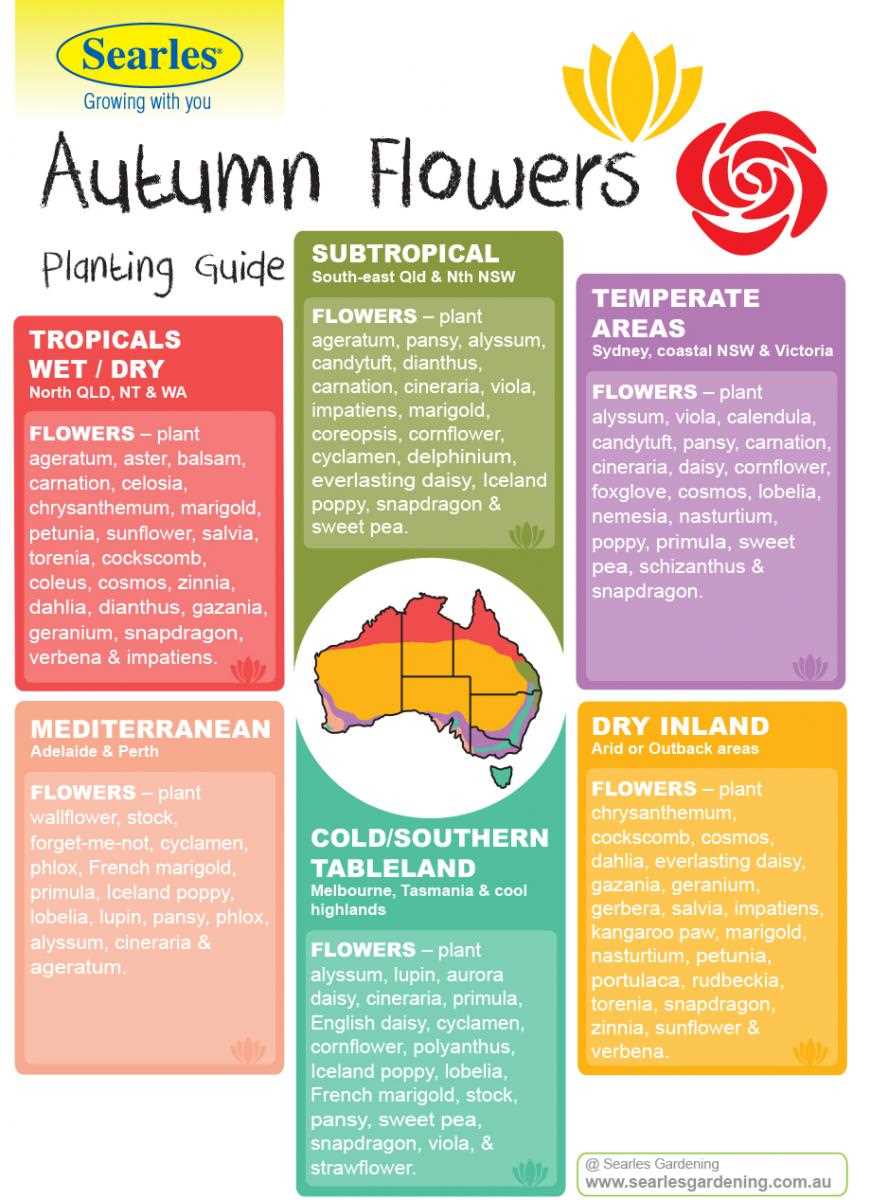
When selecting plants for your autumn garden, it’s important to choose varieties that are well-suited for the cooler temperatures and shorter days. Look for plants that are specifically labeled as suitable for fall planting or that have a late-season blooming period.
Tip: Some popular autumn flowers include chrysanthemums, asters, pansies, and ornamental grasses.
2. Prepare the Soil
Before planting, it’s important to prepare the soil to ensure good drainage and nutrient availability for your plants. Clear the area of any weeds or debris and loosen the soil with a garden tool. Mix in compost or organic matter to improve the soil’s fertility.
Tip: If the soil is heavy or clay-like, consider adding sand or perlite to improve drainage.
3. Plan the Layout
Take some time to plan the layout of your autumn garden, considering the height, color, and growth habit of the plants you’ll be planting. Place taller plants towards the back or center of the garden bed, and lower-growing plants towards the front.
Tip: Group plants with similar water and sun requirements together for easier care.
4. Dig the Holes
Dig holes that are twice as wide and deep as the root ball of your plants. This will give the roots plenty of room to grow and establish themselves in the soil. Avoid planting too close together, as overcrowding can lead to competition for nutrients and water.
5. Plant Carefully
Gently remove the plants from their containers, being careful not to damage the roots. Place the plant in the hole, making sure the top of the root ball is level with or slightly above the soil surface. Backfill the hole with soil, firming it gently around the plant to remove any air gaps.
Tip: Water your newly planted flowers thoroughly after planting to ensure good root-to-soil contact.
6. Mulch and Water
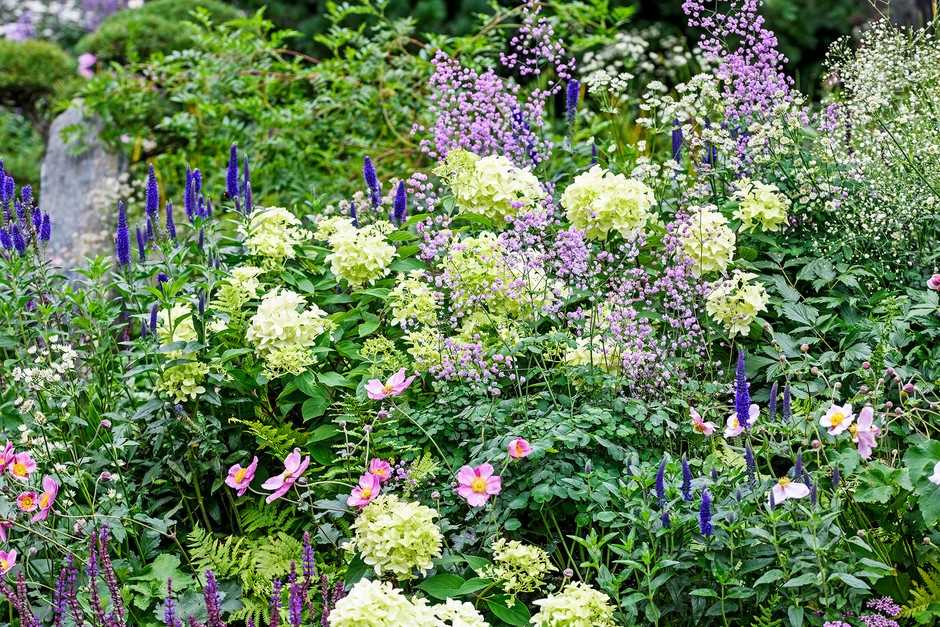
Apply a layer of mulch around your newly planted flowers to help retain moisture, suppress weeds, and regulate soil temperature. Water your plants regularly, especially during dry periods, to help them establish their root systems before winter.
7. Maintain and Monitor
Keep an eye on your autumn garden and provide appropriate care as needed. Monitor for pests or diseases and take action promptly. Deadhead spent flowers to encourage continuous blooming, and remove any fallen leaves or debris to prevent disease.
Tip: Consider adding some fall-blooming bulbs to provide color and interest in your autumn garden.
| Common Autumn Flowers | Color | Blooming Period |
|---|---|---|
| Chrysanthemums | Various | September to November |
| Asters | Purple, White, Pink | August to October |
| Pansies | Various | October to November |
| Ornamental Grasses | Various | September to November |
Watering and Fertilization
Watering and fertilization are crucial factors for the success of your fall garden. Here are some tips to help you ensure proper hydration and nutrition for your plants:
1. Watering:
- Provide deep watering sessions to encourage the establishment of strong roots.
- Water your plants in the morning to allow enough time for the foliage to dry before nighttime. This helps prevent diseases caused by moisture lingering on the leaves.
- Avoid overwatering by checking the soil’s moisture level before watering. Stick your finger about an inch deep into the soil. If it feels moist, wait before watering.
- Consider using a drip irrigation system or soaker hoses to deliver water directly to the roots and minimize evaporation.
2. Fertilization:
- Apply a slow-release fertilizer before planting your fall flowers to provide a steady supply of nutrients over time.
- Use a balanced fertilizer with equal amounts of nitrogen (N), phosphorus (P), and potassium (K) to promote healthy growth and blooming.
- Follow the specific instructions on the fertilizer packaging for application rates and frequency.
- Avoid excessive fertilization, as it can lead to excessive foliage growth at the expense of flower production.
3. Mulching:
Consider using mulch around your plants to help retain moisture, suppress weed growth, and regulate soil temperature. Apply a layer of mulch around 2-3 inches deep, ensuring that it doesn’t touch the stems or leaves of the plants.
4. Monitor and Adjust:
Regularly monitor your plants for signs of underwatering or overwatering. Adjust your watering schedule and amount based on the specific needs of each plant.
5. Consider Drought-Tolerant Varieties:
If you live in an area with limited water availability or are looking for low-maintenance plants, consider choosing drought-tolerant varieties for your fall garden. These plants are adapted to thrive in drier conditions and require less frequent watering.
By following these watering and fertilization tips, you can ensure that your fall garden has the necessary hydration and nutrients to thrive and provide a beautiful display throughout the season.
Protecting Your Plants from Frost
Frost can be damaging to plants, especially those that are not cold-hardy. However, with some preparation and the right techniques, you can protect your plants from frost and ensure they thrive even in colder temperatures.
Choose Frost-Tolerant Plants
One of the best ways to protect your plants from frost is to choose varieties that are frost-tolerant. These plants are more resistant to freezing temperatures and are less likely to be damaged by frost. Some examples of frost-tolerant plants include winter pansies, ornamental cabbage, and kale.
Cover Your Plants
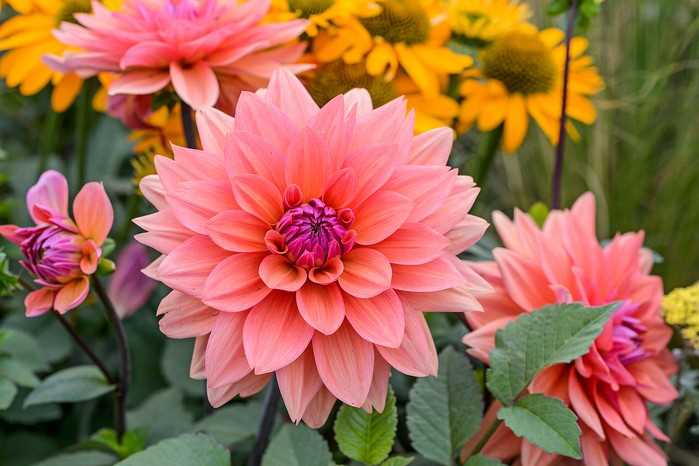
Another effective method for protecting your plants from frost is to cover them with a protective barrier. This can be done using materials such as blankets, tarps, or even upside-down buckets. The covering acts as insulation, trapping heat around the plants and preventing frost damage.
Water Your Plants
Watering your plants before a frost can also help protect them. Moist soil retains heat better than dry soil, so watering your plants thoroughly before a frost can help keep them warm. Be sure to water the base of the plants and avoid overhead watering, as this can cause the plants to become even colder.
Use Mulch
Applying a layer of mulch around the base of your plants can provide insulation and help protect them from frost. Mulch helps to regulate soil temperature, keeping the roots of the plants warmer. It also helps to retain moisture in the soil, which can further protect the plants from frost damage.
Bring Plants Indoors
If you have potted plants or delicate flowers that are not frost-tolerant, it may be best to bring them indoors during cold spells. Placing them in a sunny spot indoors can help them continue to thrive, even when temperatures drop outside. Just be sure to acclimate the plants to the indoor environment slowly, as sudden changes in temperature can shock and damage them.
Monitor the Weather
Lastly, regularly monitoring the weather forecast can help you stay prepared for frost. If frost is predicted, take action to protect your plants before it arrives. Being proactive and taking steps to shield your plants from frost can go a long way in ensuring their health and beauty throughout the autumn season.
Pruning and Deadheading
Proper pruning and deadheading flowers in autumn can help promote healthy growth and prepare your garden for the coming winter season. Here are some tips for pruning and deadheading your flowers:
1. Pruning
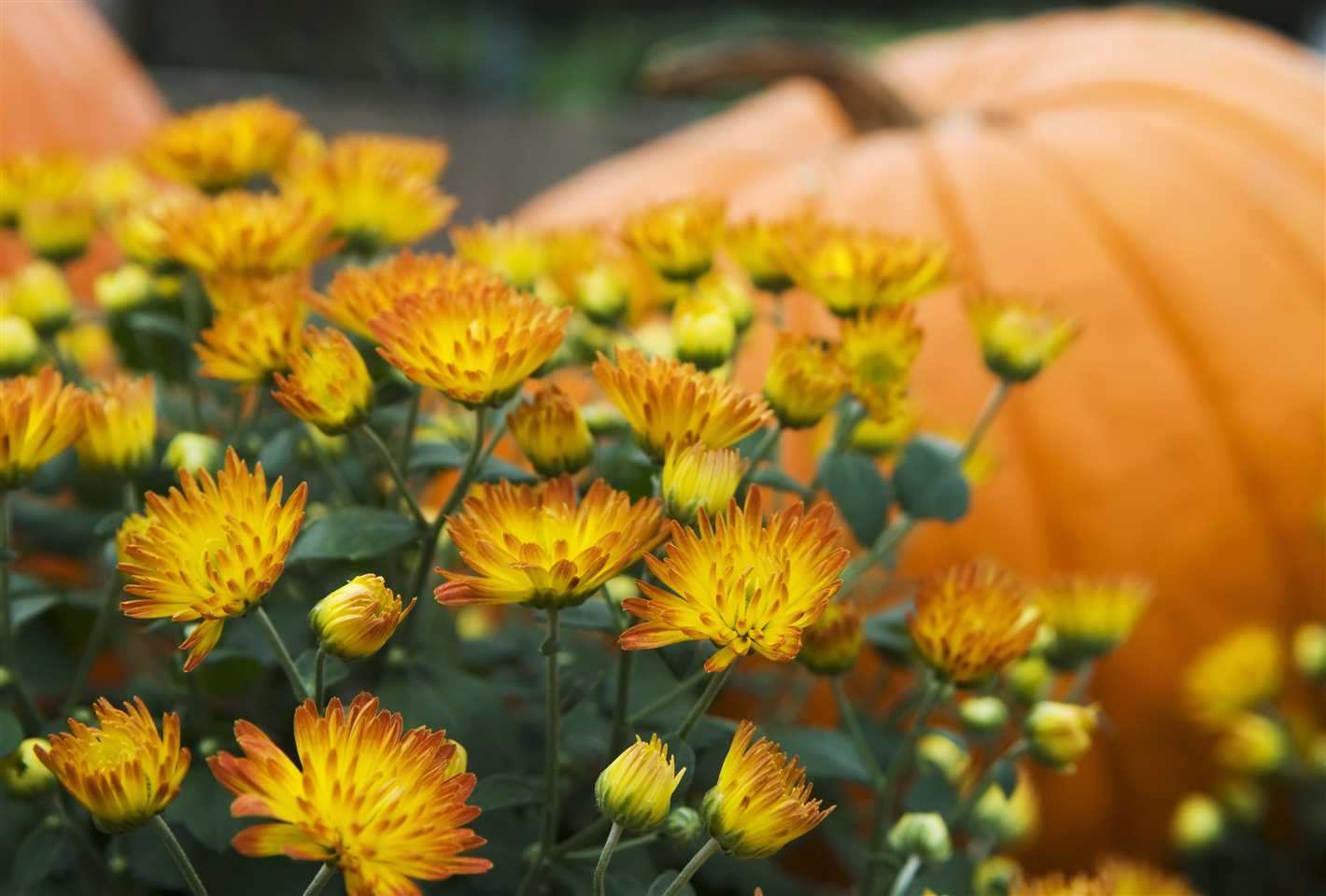
Pruning involves cutting back certain parts of the plant to encourage new growth and maintain its shape. Here’s how you can prune your flowers in autumn:
- Remove any dead or damaged branches or stems by making clean cuts just above a healthy bud or lateral branch.
- Prune any overgrown or crowded sections to improve airflow and prevent disease.
- Trim back any long or leggy stems to promote bushier growth.
- Remember to sanitize your pruning tools between each cut using a mix of water and bleach to prevent the spread of diseases.
2. Deadheading
Deadheading is the process of removing spent flowers to encourage new blooms and prevent the plant from going to seed. Here’s how you can deadhead your flowers in autumn:
- Inspect your plants regularly and identify flowers that have faded or wilted.
- Using your fingers or pruners, snip off the faded flower just above a healthy bud or leaf node.
- Remove any seedpods or developing seeds to redirect the plant’s energy into producing more flowers.
- Be sure to dispose of the dead flower heads to prevent the chance of disease or pest infestation.
By regularly pruning and deadheading your flowers in autumn, you can help maintain the appearance and health of your garden while also encouraging new growth. These simple tasks can make a big difference in the overall beauty of your fall garden.
Adding Mulch for Insulation
One of the most important steps in planting flowers in autumn is to add mulch for insulation. Mulch provides a layer of protection for your plants and helps to regulate soil temperature, keeping it consistently warm. Here are some tips on how to effectively add mulch to your garden:
1. Choose the Right Mulch
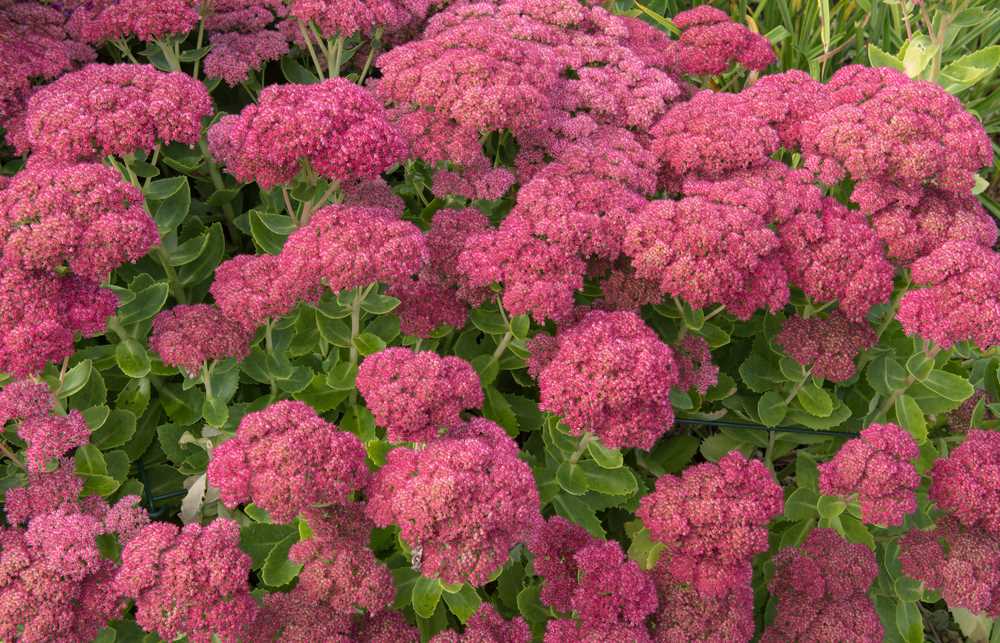
There are different types of mulch available, such as wood chips, straw, and shredded leaves. Choose a mulch that suits your garden and the plants you are planting. The type of mulch you choose should be organic and able to decompose over time, enriching the soil.
2. Apply a Thick Layer
When adding mulch, make sure to apply a thick layer, around 2 to 4 inches deep. This will provide adequate insulation and prevent weeds from growing around your plants. However, be careful not to pile the mulch against the stems of the plants, as it can cause them to rot.
3. Mulch Around the Base
Start by mulching around the base of the plants, creating a circle of mulch around each one. Make sure to leave a small space around the stem to prevent moisture buildup and potential rot. Extend the mulch layer to cover the surrounding soil, creating a protective blanket.
4. Reapply Mulch Regularly
Mulch tends to break down over time, especially during the winter months. It is important to reapply mulch regularly to maintain its effectiveness. Keep an eye on the thickness of the mulch layer and add more as needed.
5. Consider Using Compost
In addition to organic mulch, consider adding a layer of compost before applying the mulch. Compost is rich in nutrients and can further enrich the soil, providing a healthy environment for your plants to thrive.
6. Remove Old Mulch in Spring
Once spring arrives, it is important to remove the old mulch from your garden. The old mulch may have decomposed and lost some of its insulation properties. Clearing it out allows for fresh mulch to be applied, ensuring optimal protection for your plants.
By following these tips and adding mulch for insulation, you can create a beautiful fall garden that will thrive throughout the colder months. Your plants will be protected from harsh weather conditions and will emerge strong and healthy in the spring.
Maintaining a Beautiful Fall Garden
Watering
One of the most important aspects of maintaining a beautiful fall garden is proper watering. Although the cooler temperatures may make you think that plants require less water, they still need to be hydrated. Check the soil moisture regularly by sticking your finger about an inch into the soil. If it feels dry, water your plants deeply until the water runs out of the drainage holes.
Weeding
Weeds can quickly take over a garden and compete with your flowers for nutrients and water. Make sure to regularly remove any weeds that appear in your fall garden. Pull them out by hand or use a small gardening tool to get rid of them.
Deadheading
To encourage continuous blooming and prevent your flowers from going to seed, deadhead any spent blooms. This involves removing the faded flowers by cutting them off just above the next set of healthy leaves or stems. Deadheading will not only make your garden look more attractive, but it will also redirect the plant’s energy towards producing more flowers.
Fertilizing
Providing your plants with the necessary nutrients is essential for their health and growth. Apply a balanced slow-release fertilizer to your fall garden according to the package instructions. This will ensure that your flowers have the nutrients they need to thrive throughout the season.
Protecting from Frost
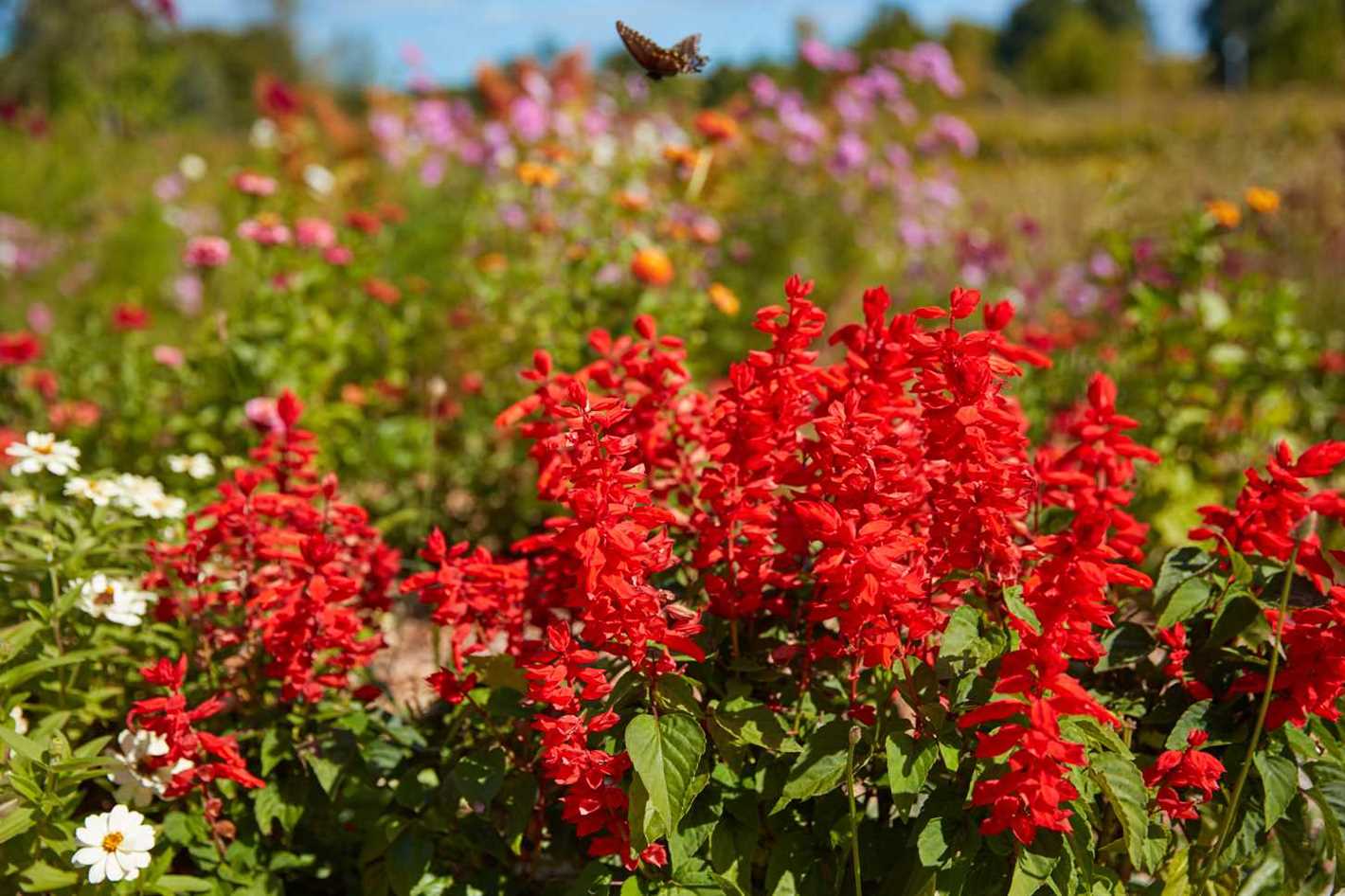
As fall progresses, colder temperatures and frost may threaten your garden. To protect your flowers, you can cover them with a frost cloth or blankets overnight when frost is forecasted. Remove the coverings during the day to allow air circulation and sunlight to reach your plants.
Monitoring for Pests
Keep an eye out for any pests that may be damaging your fall garden. Common garden pests during the fall include aphids, slugs, and snails. Regularly inspect your plants for signs of damage and take appropriate measures to control pests, such as handpicking or using organic pest control solutions.
Cleaning up
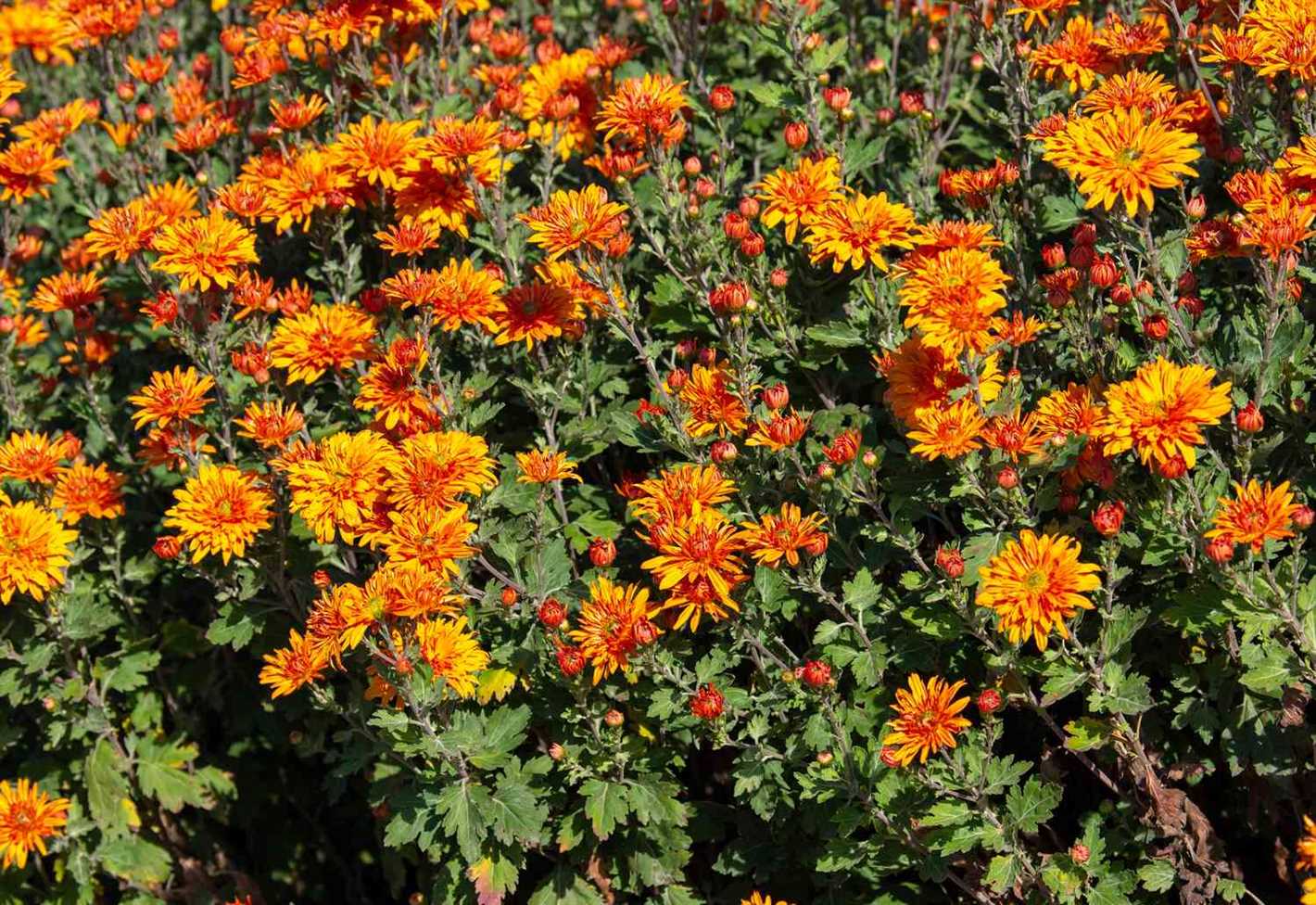
As the fall season comes to an end, it is important to clean up your garden to prepare for winter. Remove any debris, dead leaves, and spent plants from your garden beds. This will help prevent the spread of diseases and pests and make it easier for you to start fresh in the spring.
Enjoying the Harvest
If you have planted any vegetables or herbs in your fall garden, make sure to enjoy the harvest. Harvest your vegetables when they are ripe and ready to be eaten. Freshly harvested produce not only tastes delicious, but it is also rewarding to enjoy the fruits of your labor.
By following these tips, you can maintain a beautiful fall garden and enjoy the colors and blooms that this season brings. Happy gardening!
Questions and Answers:
What are some tips for planting flowers in the autumn?
When planting flowers in the autumn, it is important to choose the right types of flowers that can withstand the cooler temperatures. Some tips include selecting fall-blooming flowers, preparing the soil, providing adequate water and mulching to protect the plants from frost.
Which types of flowers are suitable for autumn planting?
There are several types of flowers that are particularly suitable for autumn planting. Some popular options include chrysanthemums, pansies, asters, and sedums. These flowers are known for their ability to thrive in cooler temperatures and provide vibrant colors to a fall garden.
What should I do to prepare the soil for planting flowers in autumn?
Preparing the soil is an important step in planting flowers in autumn. Start by removing any weeds or debris from the area. Then, loosen the soil with a garden fork or tiller and mix in some compost or organic matter to improve its drainage and fertility. This will provide a good foundation for the plants to grow.
How often should I water my flowers in the autumn?
In the autumn, it is important to water your flowers regularly, especially during dry spells. Water deeply about once a week, ensuring that the soil is moist but not waterlogged. Be sure to adjust the amount of water based on the specific needs of the flowers and the weather conditions in your area.
What is the purpose of mulching when planting flowers in the autumn?
Mulching is an essential step when planting flowers in the autumn. It helps to insulate the soil and protect the plants’ roots from extreme cold and frost. Additionally, mulch helps to retain moisture in the soil, reduce weed growth, and improve the overall appearance of the garden.
Can I plant bulbs in the autumn?
Absolutely! Autumn is actually the perfect time to plant bulbs for spring blooming flowers. Tulips, daffodils, and crocuses are just a few examples of bulbs that should be planted in the autumn. Make sure to plant them at the appropriate depth and in well-drained soil for the best results.
Are there any specific maintenance tasks I should do for my fall garden?
Yes, there are a few maintenance tasks that are important for a fall garden. Regularly deadhead flowers to encourage new blooms, remove any fallen leaves or debris, and provide protection for delicate plants during frosty nights. It is also a good idea to fertilize the soil with a slow-release fertilizer to support the plants’ growth.







